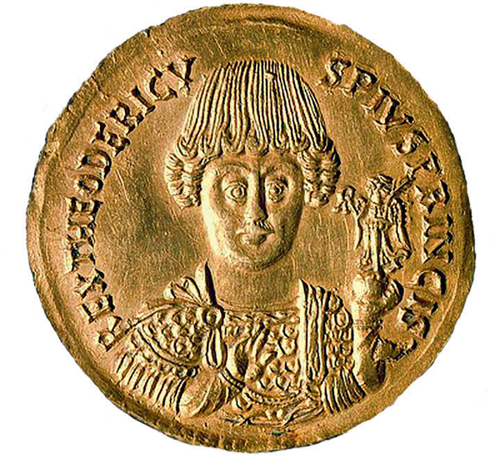
16. The gold triple solidus of Theoderic (493–526). It identifies him as REX, King, ‘PIUS PRINC(EPS) I(NVICTUS) S(EMPER)’ (pious ruler, forever invincible). In his left hand he holds the orb topped with a symbol of winged victory that presents a victory wreath to him. His hairstyle and moustache are Gothic; his costume, and jewelled fibula and symbols are entirely imperial.
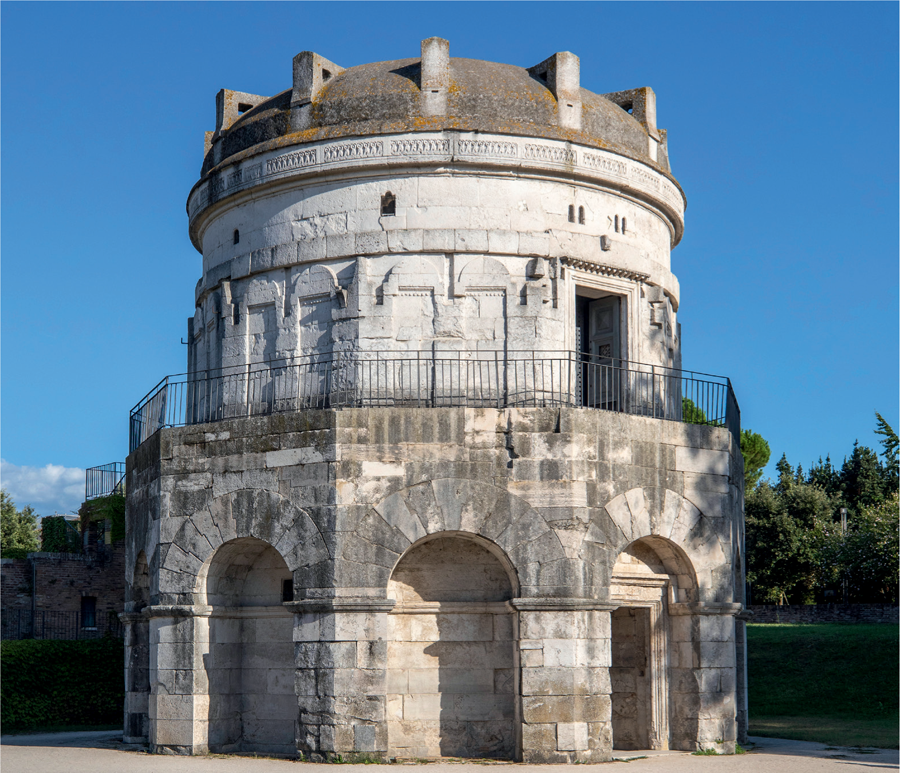
17. Theoderic’s Mausoleum, just beyond the walls of Ravenna, constructed before his death in 526.
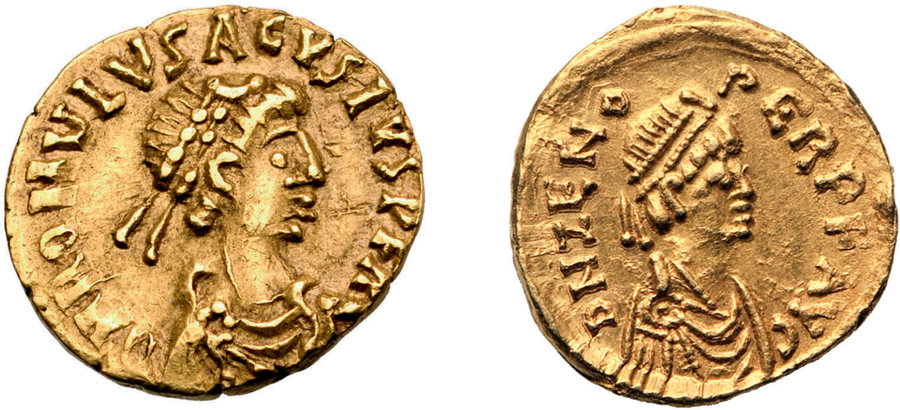
18 and 19. (Left) Gold tremissis (one third solidus) of DN Romulus Augustus PF AVG, minted at Ravenna in 476. (Right) Gold tremissis minted by Odoacer at Ravenna in the name of the Emperor Zeno between 476 and 491 (DN ZENO PERPI(tuus) AVG(ustus)).
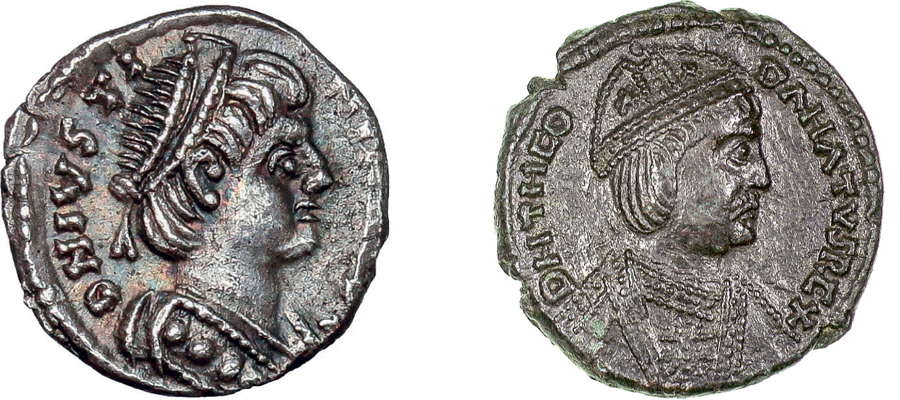
20 and 21. (Left) Silver quarter siliqua of the young King Athalaric (526–34), minted in Ravenna in the name of Emperor Justinian. (Right) Bronze coin of King Theodahad (535–6), (DN THEODAHATUS REX), also minted in Ravenna.
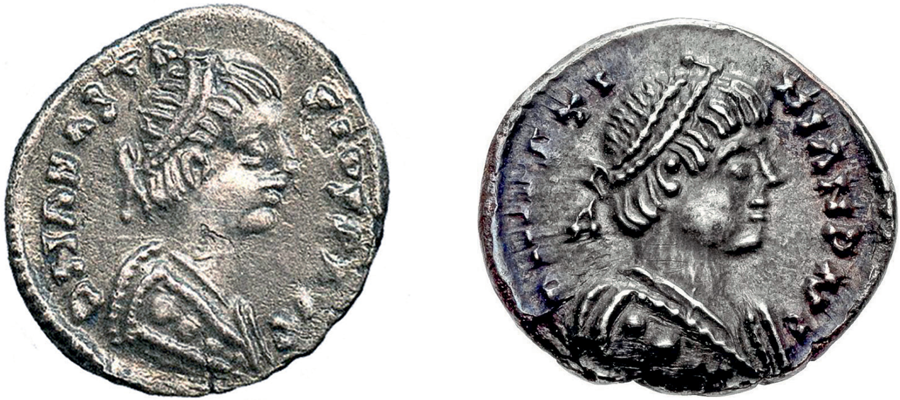
22 and 23. (Left) Silver half siliqua of King Baduila/Totila (549–552), minted in Pavia. (Right) Silver half siliqua of King Witigis (536–40), minted in Ravenna.

24. Folio 99r of the sixth-century Gothic Bible made in Ravenna, with gold and silver lettering on purple dyed parchment, showing the text of part of Christ’s debate with the Pharisees (John 8, 34–40). The arcades below the text provide corresponding passages from the Gospels of Luke, Mark and Matthew in the form of canon tables.
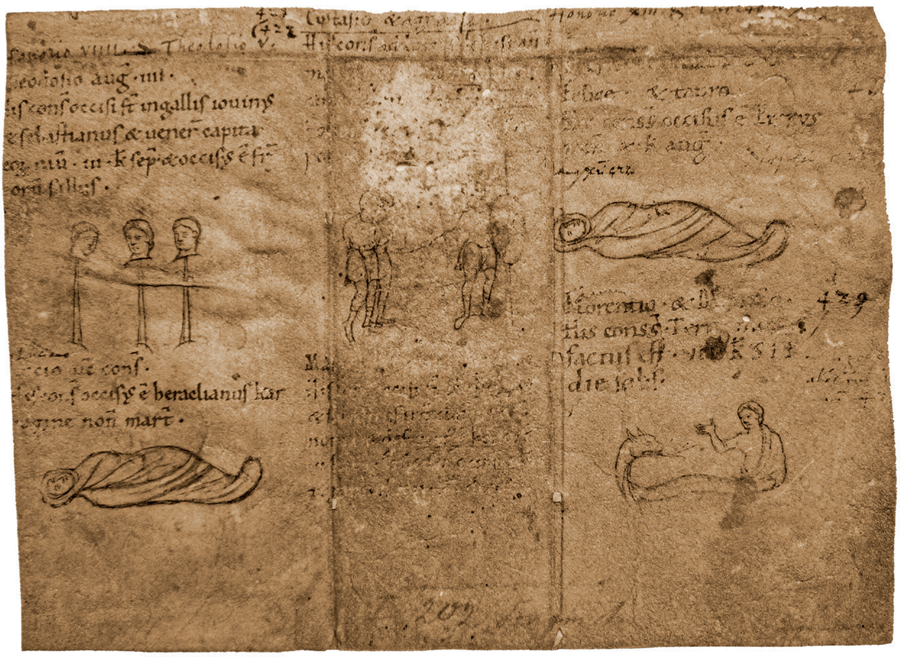
25. The Annals of Ravenna. One half page of a manuscript, with entries for the years from 412, including the display of the head of the usurper Constantine III on a pole (top left) and a monster emerging from the earth representing an earthquake (bottom right). Deaths are indicated by shrouded corpses.

26. The other side of the same fragment, with Theodosius II (the emperor seated on a globe) promoting Aetius to the dignity of patricius in 435 (top left) and entries for 436 and 437; another earthquake (centre); a siege of Aquileia (top right) and the deaths of two individuals (bottom right).
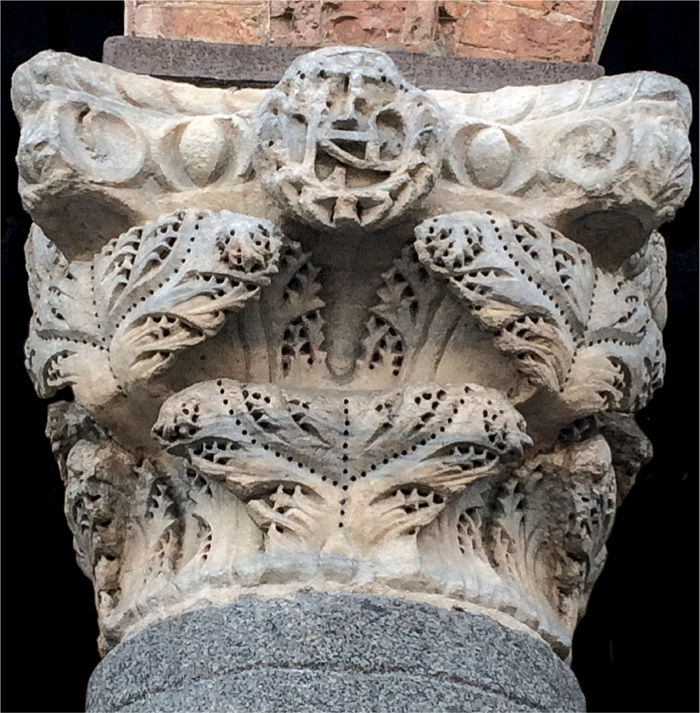
27. Capital from a dismantled Gothic church, with the monogram of Theoderic at the centre, re-used at the Venetian loggia on the Piazza del Popolo, Ravenna.
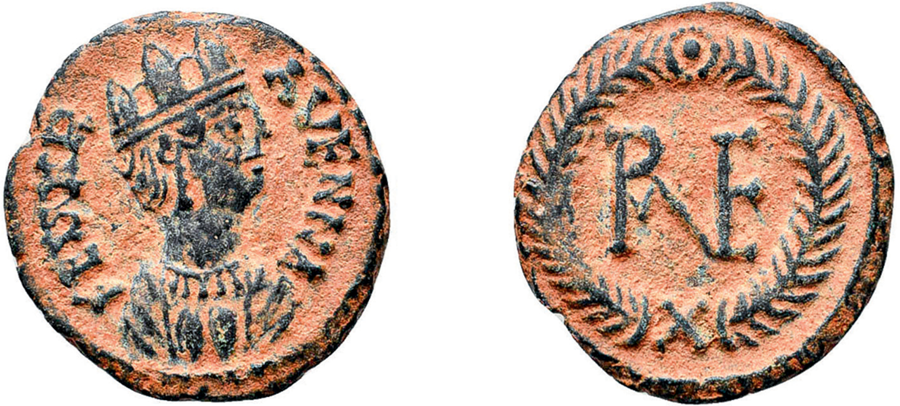
28. A Ravenna penny, a sixth-century bronze coin of 10 nummi, minted in Ravenna, with (left) a turreted woman representing the city, identified as FELIX RAVENNA, and (right) a monogram R(avenna) F(elix) surrounded by a wreath.
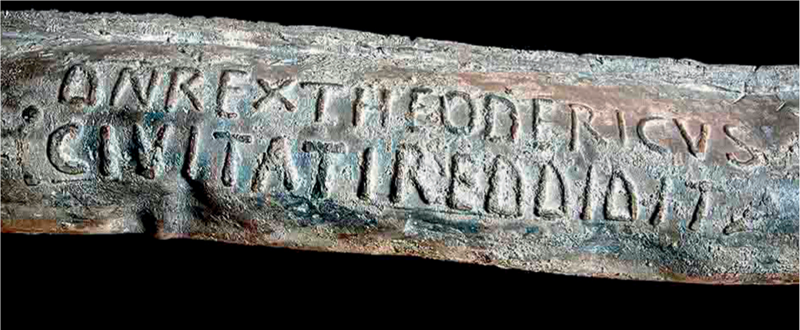
29. Lead pipe stamped with the inscription, ‘Our Lord King Theodericus restored [it] to the city’; part of Theoderic’s repair to the aqueduct and water channels (493–526).
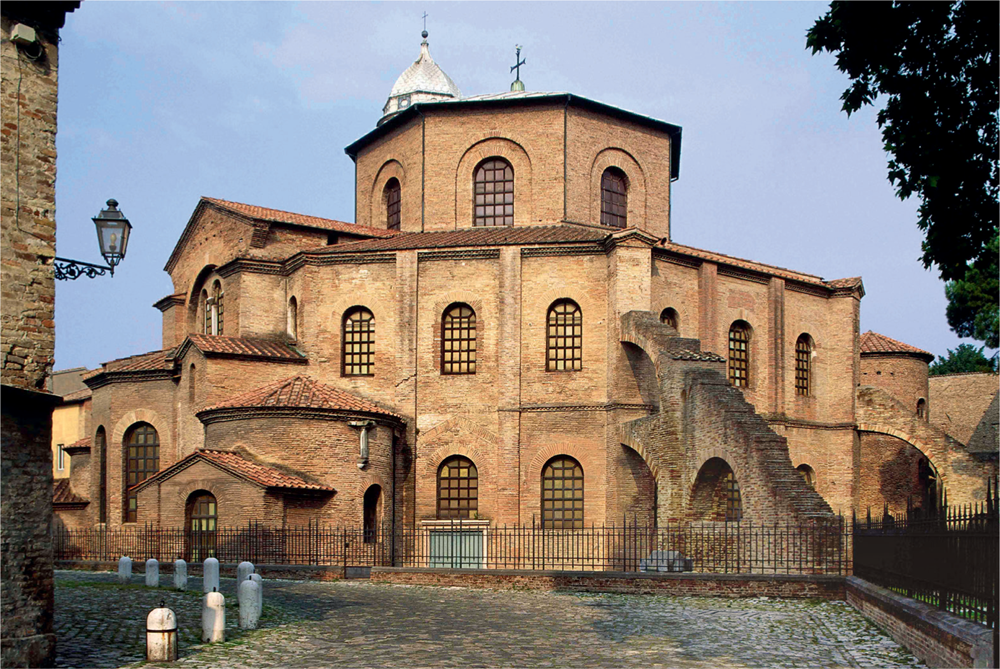
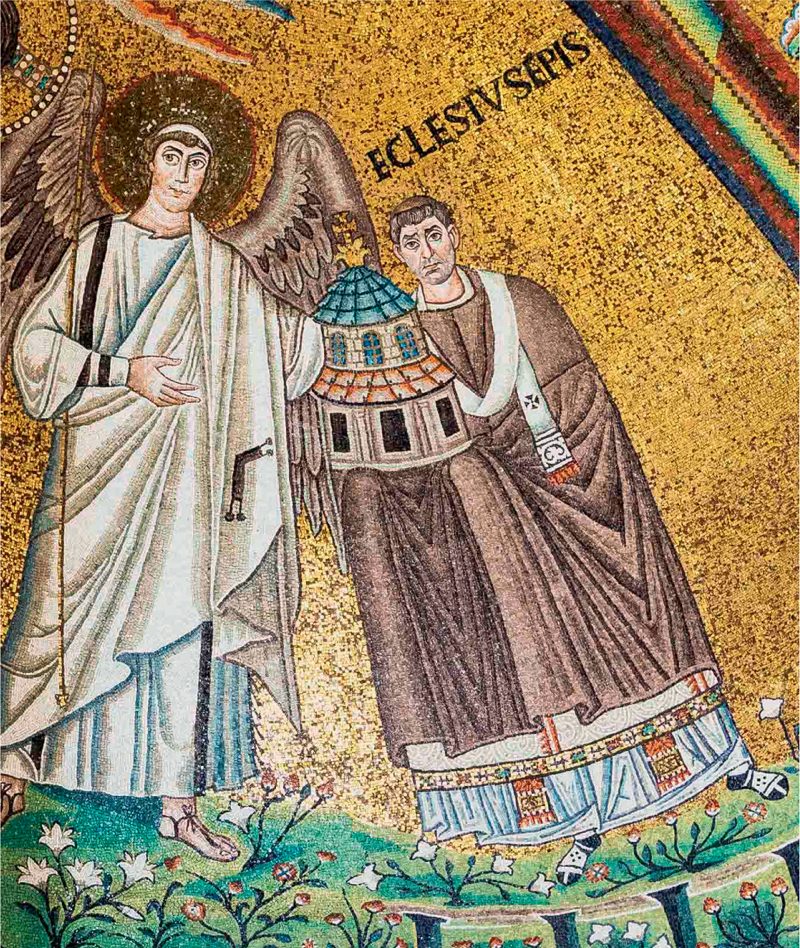
30 and 31. San Vitale, Ravenna (526–40). (Above) The exterior from the west, showing its octagonal form, and (below) the apse mosaic, a detail of Bishop Ecclesius presenting the domed church of San Vitale to Christ.
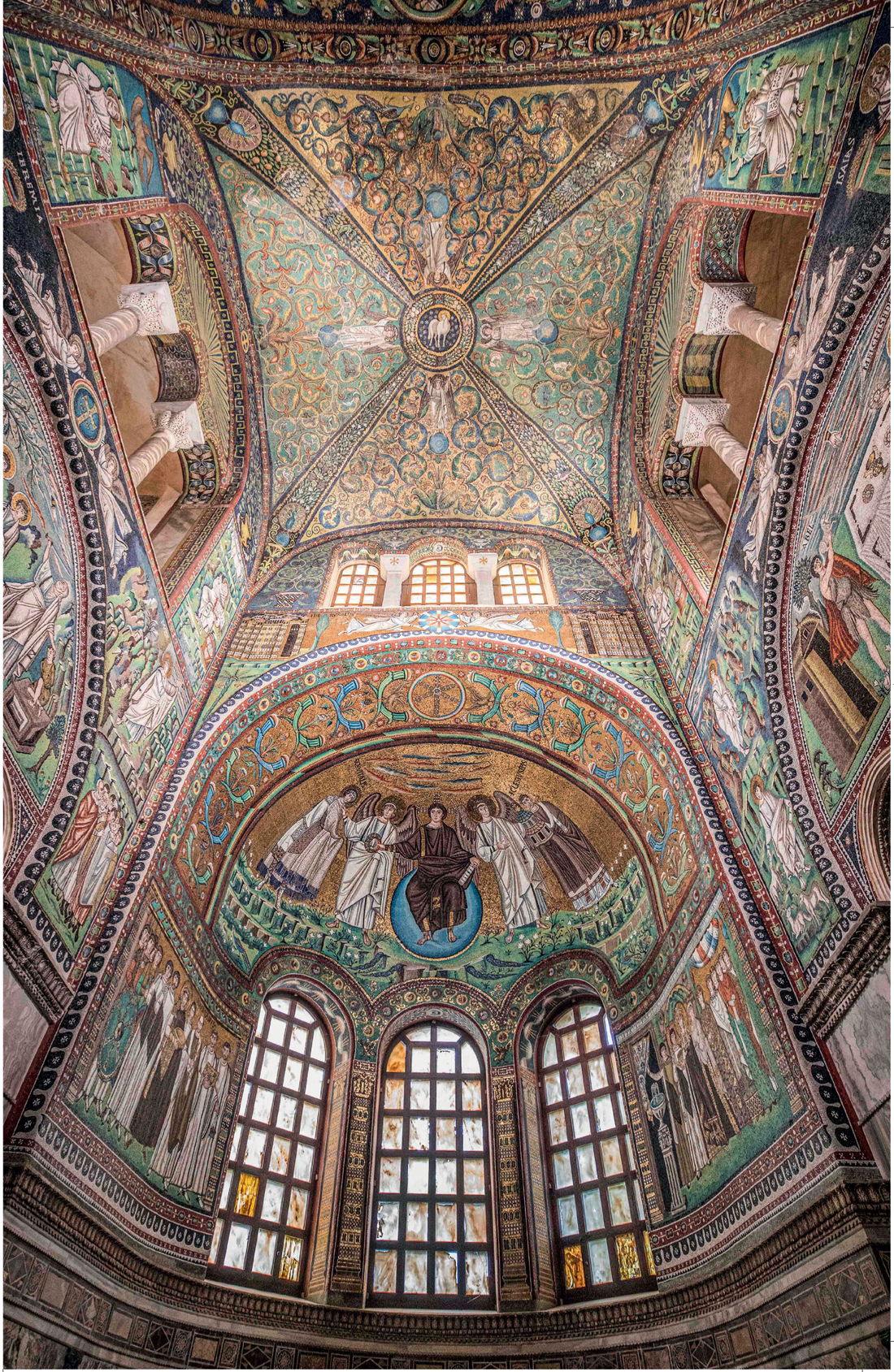
32. (Opposite) The apse of San Vitale, with Christ seated on a globe flanked by angels. The two famous imperial panels (37 and 38) are immediately below to either side. The central medallion in the dome displays the lamb of God, supported by four angels, and floral garlands with animals and birds.
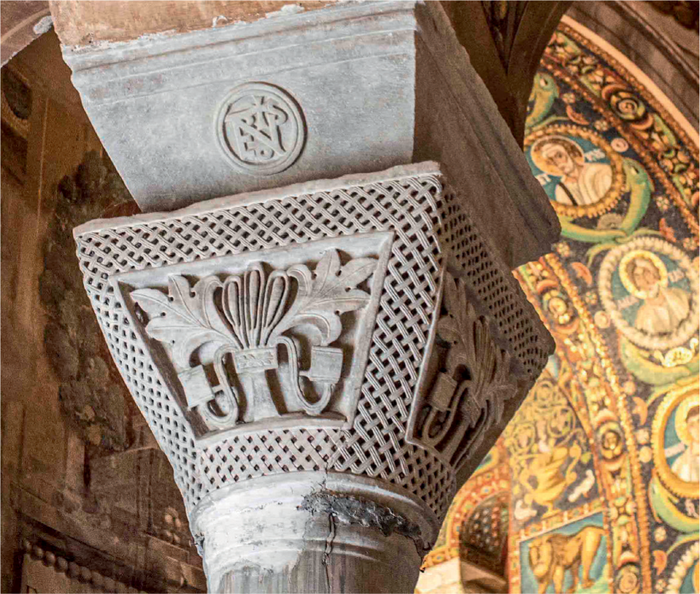
33. Impost block with the monogram of Bishop Victor (537–44) above a capital imported from Constantinople, on the ground floor of San Vitale.
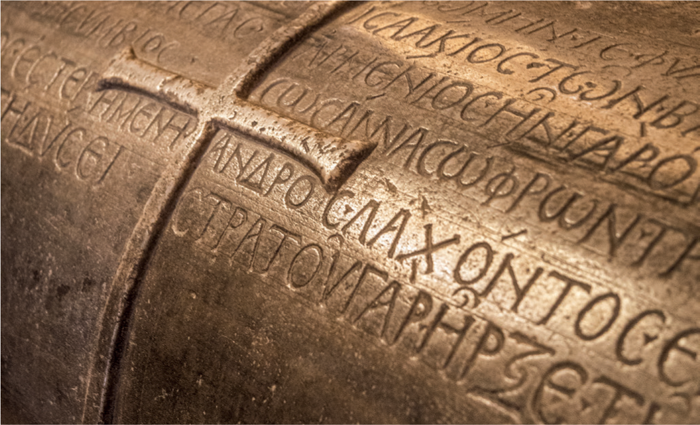
34. A sarcophagus lid inscribed with Exarch Isaac’s Greek epitaph, commissioned by his widow Susanna in 643.
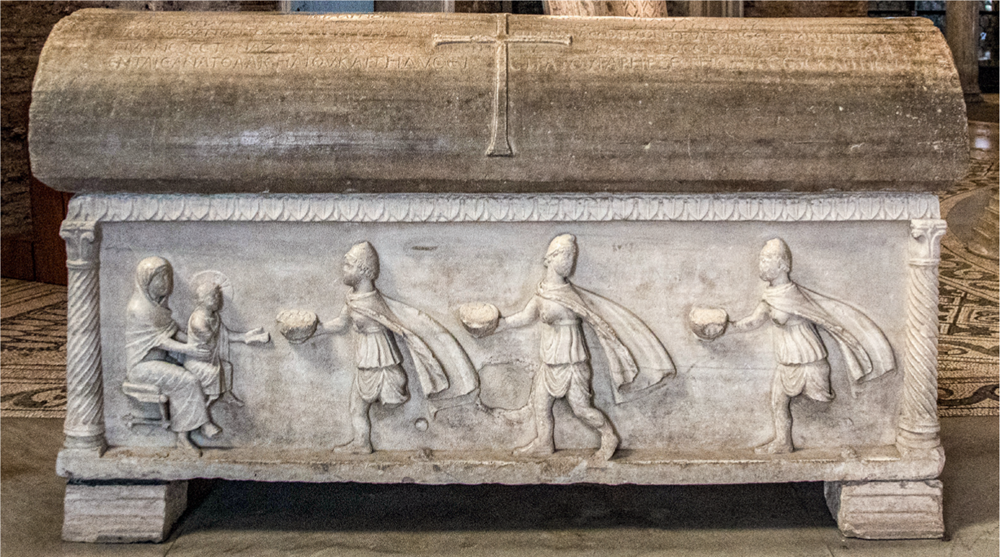
35. Early Christian sarcophagus with the Three Kings presenting their gifts to the Virgin and Child, re-used for the burial of Exarch Isaac in San Vitale.